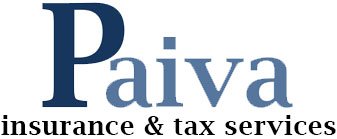By Andy Ives, CFP®, AIF®
IRA Analyst
For those who have 401(k)s or other retirement plans, the required beginning date (RBD) when required minimum distributions (RMDs) are officially “turned on” is April 1 of the year after the year a person turns age 73. This is the same RBD applicable to IRAs. However, if a person is still working for the company that sponsors the 401(k), and if that person does not own more than 5% of the company, then RMDs from the company retirement plan can be delayed until April 1 of the year after the year the person retires. This is commonly called the “still-working exception.”
Some additional details about the still-working exception include the following:
- It only applies to RMDs from employer plans like a 401(k) or 403(b). It does not apply to IRAs or IRA-based plans like SEPs and SIMPLEs.
- It does not apply to employer plans if the person is not currently working for that company (e.g., plans from previous employers).
- The still-working exception is optional on the part of the plan. It is not a required design feature, although most plans allow it.
- An employee must work through the entire year for the still-working exception to apply for that year.
That last bullet point about retirement/separation from service trips people up the most. For example, if a 75-year-old employee retires in late December, then an RMD will apply for that same year. (That RMD can be delayed until April 1 of the next year unless a rollover is done prior to the RBD.) Or, if this hypothetical 75-year-old was laid off, that would also result in an RMD for that year. To ensure that an RMD is avoided for a particular year using the still-working exception, the safest bet is to schedule your official retirement/separation-from-service date for January 1 (or later) of the following year. (And, to avoid IRS scrutiny, you should actually work up to and including that January retirement date.)
Speaking of timing and separation from service, there is a tricky scenario with the still-working exception that must be considered.
Example: Roger is age 75 and still gainfully employed at ABC, Inc. He participates in the company’s 401(k) and has been delaying RMDs from the plan for a few years. Roger anticipates working until he is 80. Sadly, Roger had a heart attack and died. Of course, this ends Roger’s career at ABC, Inc., and he is no longer an employee.
Since Roger has separated from service (albeit not in the fashion he intended), and since he is no longer still working, does this mean he has an RMD from the ABC, Inc. 401(k) in his year of death?
He does not! Remember, the RBD (when RMDs are officially “turned on”) is April 1 of the year after the year person turns age 73, or April 1 of the year after the year a person retires if using the still-working exception. You must live long enough to reach that date for RMDs to officially begin. Since Roger died before the RBD applicable to his 401(k) plan, there is no year-of-death RMD from the plan for his beneficiaries to worry about.
If you have technical questions you would like to have answered, be sure to submit them to mailbag@irahelp.com, to be answered on an upcoming Slott Report Mailbag, published every Thursday.
https://irahelp.com/the-tricky-still-working-exception-after-death/
